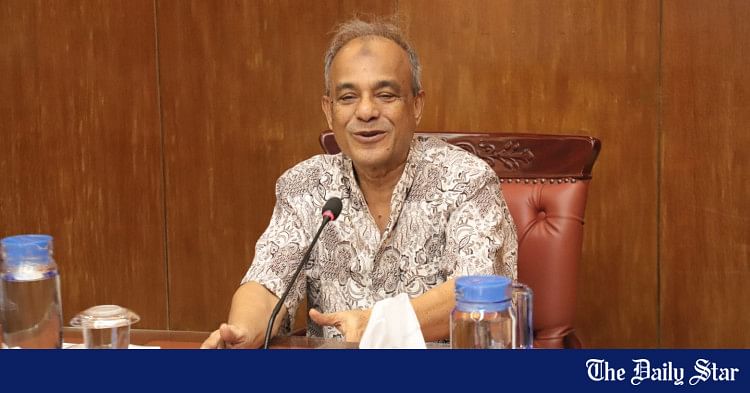Saif
Senior Member
- Messages
- 15,397
- Nation

- Axis Group


Bangladeshi youth shot to death by BSF along Panchagarh border
The Indian Border Security Force took away the body of a middle-aged Bangladeshi man after shooting him to death near the zero line of the border at Mominpara under sadar upazila in Panchagarh on Friday morning.
 www.newagebd.net
www.newagebd.net
Bangladeshi youth shot to death by BSF along Panchagarh border
Staff Correspondent 06 December, 2024, 14:15

UNB Photo
The Indian Border Security Force took away the body of a middle-aged Bangladeshi man after shooting him to death near the zero line of the border at Mominpara under sadar upazila in Panchagarh on Friday morning.
The incident took place as tension ran high between the two neighbouring countries, particularly over the recent attack on Bangladesh’s mission in Tripura’s Agartala.
The deceased is Anwar Hossain, 40, a resident of Debangarh area under Debangarh union of Tetulia upazila in Panchagarh, BGB said in a press release on Friday.
According to the BSF, the incident took place approximately 100 yards from the zero line of the border at Mominpara under Pamchagarh sadar upazila at about 5:00am on Friday, when some Bangladeshis entered India to smuggle cows through the border.
BGB claimed that when the BSF intercepted them, the smugglers became aggressive and tried to attack the BSF members.
Later, BSF members tried to disperse them by firing, leaving Anwar dead on the spot, the BGB said.
Hearing sound of the gunshots, the BGB members also fired blank shots. The BSF members then took Anwar’s body away.
The BGB in the press release strongly protested at the incident, saying that a flag meeting would be called to bring back the body.
Earlier, 13-year-old Swarna Das lost her life in the Lalarchak border area of Sharifpur union under Kulaura upazila of Moulvibazar on the night of September 1 in BSF firing and took away her body.
BSF returned Swarna’s body after 45 hours of the incident.
According to Ain O Salish Kendra, at least 22 Bangladeshis were shot to death by the BSF members, while 22 others injured between January and October in 2024.
A platform named ‘Students-citizens against discrimination’ on Friday staged a protest rally protesting at the killing of a Bangladeshi citizen in the Panchagarh border area by the BSF and the spread of deliberate misinformation about Bangladesh by the Indian media, reported Dhaka University correspondent.
The brief rally was held at around 6:00pm at the base of the Anti-Violence Raju Memorial Sculpture at Dhaka University.
Staff Correspondent 06 December, 2024, 14:15
UNB Photo
The Indian Border Security Force took away the body of a middle-aged Bangladeshi man after shooting him to death near the zero line of the border at Mominpara under sadar upazila in Panchagarh on Friday morning.
The incident took place as tension ran high between the two neighbouring countries, particularly over the recent attack on Bangladesh’s mission in Tripura’s Agartala.
The deceased is Anwar Hossain, 40, a resident of Debangarh area under Debangarh union of Tetulia upazila in Panchagarh, BGB said in a press release on Friday.
According to the BSF, the incident took place approximately 100 yards from the zero line of the border at Mominpara under Pamchagarh sadar upazila at about 5:00am on Friday, when some Bangladeshis entered India to smuggle cows through the border.
BGB claimed that when the BSF intercepted them, the smugglers became aggressive and tried to attack the BSF members.
Later, BSF members tried to disperse them by firing, leaving Anwar dead on the spot, the BGB said.
Hearing sound of the gunshots, the BGB members also fired blank shots. The BSF members then took Anwar’s body away.
The BGB in the press release strongly protested at the incident, saying that a flag meeting would be called to bring back the body.
Earlier, 13-year-old Swarna Das lost her life in the Lalarchak border area of Sharifpur union under Kulaura upazila of Moulvibazar on the night of September 1 in BSF firing and took away her body.
BSF returned Swarna’s body after 45 hours of the incident.
According to Ain O Salish Kendra, at least 22 Bangladeshis were shot to death by the BSF members, while 22 others injured between January and October in 2024.
A platform named ‘Students-citizens against discrimination’ on Friday staged a protest rally protesting at the killing of a Bangladeshi citizen in the Panchagarh border area by the BSF and the spread of deliberate misinformation about Bangladesh by the Indian media, reported Dhaka University correspondent.
The brief rally was held at around 6:00pm at the base of the Anti-Violence Raju Memorial Sculpture at Dhaka University.



